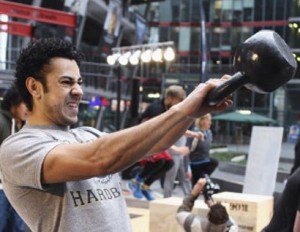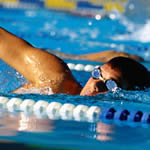 CrossFit is a mode of exercise that targets cardiovascular and respiratory endurance, strength, flexibility, mobility, stamina, power, speed, agility, coordination and balance. The workouts change daily and can be performed by individuals at all fitness levels.
CrossFit is a mode of exercise that targets cardiovascular and respiratory endurance, strength, flexibility, mobility, stamina, power, speed, agility, coordination and balance. The workouts change daily and can be performed by individuals at all fitness levels.
Most Common CrossFit Injuries
The most common injuries from CrossFit are from use of poor form with the exercises. Standard push-ups, handstand push-ups, push press, push jerk, kipping pull ups, hang power clean, hang power snatch, ring dips, overhead squatting, and many more are all great exercises at high intensity.
However, they are very stressful, especially on the shoulder – if you don’t have proper scapular positioning and proper stabilizing strength throughout the rotator cuff and scapula. So the next time you are performing these, focus on where your shoulder blade is positioned and try to avoid what we call “winging” by keeping the shoulder blade “pinched back”.
High Intensity Exercise
The intensity level of CrossFit pushes an individual to their limits every day and over time, overuse of the shoulder and other joints in the body can lead to an injury if not attended to prior to performing another CrossFit session. Studies suggest that constantly exercising at high intensity may even provoke overtraining — a drop in energy and performance that happens when the body isn’t able to fully recover from workouts.
Intermittent high-intensity exercise is a great way to get fit, but only when the body can recover. By not overdoing it, you avoid the risk of injury. If you are considering a CrossFit regimen, call OSS and schedule an appointment with one of our physicians about how to proceed in getting the most out of your CrossFit workout without injury.
According to Dr. Reed, “CrossFit is an exercise regimen that can lead to huge performance gains and improved athletic and cardiovascular function when performed correctly and safely. It’s important that each individual concentrates on good form and optimal nutrition and hydration, and keeps on the lookout for signs and symptoms of overtraining.”
If you believe you are suffering from a workout-related injury and need specialized orthopedic care, the physicians at Orthopedic Specialists of Seattle provide excellent treatment options available for you. Please feel free to contact OSS at (206) 633-8100 to schedule an appointment.


 Swimming is a sport in which there is a great diversity among participants. There are both recreational and competitive swimmers, ranging in age from preschool through college.
Swimming is a sport in which there is a great diversity among participants. There are both recreational and competitive swimmers, ranging in age from preschool through college. 